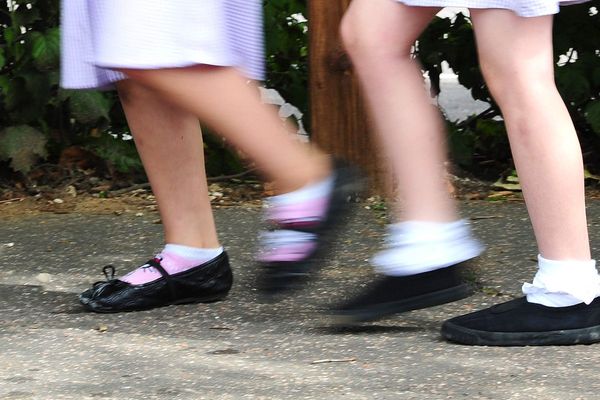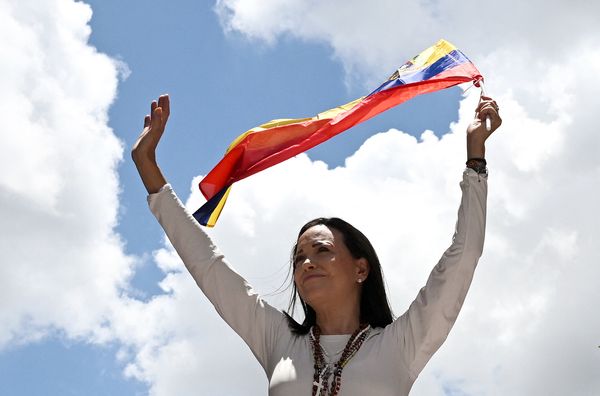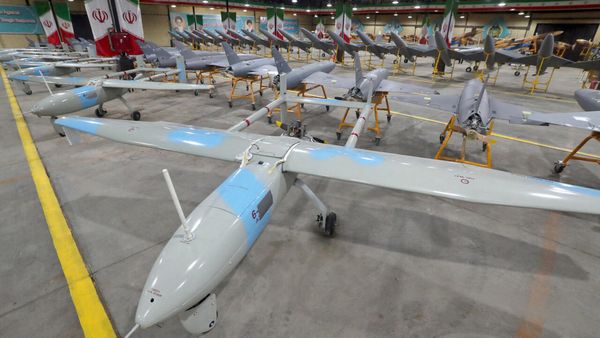
Israel and the occupied Palestinian territories are reeling from the most serious escalation between the Jewish state and the Islamist group Hamas to date, after a surprise Palestinian attack on the morning of a Jewish holiday led to hundreds of deaths, the seizure of dozens of Israeli hostages, and sparked fears of a regional escalation.
Unverified videos released by Hamas, the militant organisation that seized control of the Gaza Strip in 2007, showed captive young Israelis covered in blood, their hands tied behind their backs and eyes wide with fright as battles between the faction and the Israel Defence Forces (IDF) continued to rage across southern Israel and in the Palestinian enclave on Saturday.
At least 250 people in Israel were killed, with at least 1,800 injured, according to Israeli officials. The Red Crescent said 92 people had been injured in the West Bank. On Israeli television, family members of the dead, and of dozens of missing people taken hostage by Hamas, wept down phones as they described how their homes and communities had been attacked while families slept.
In the Gaza Strip, at least 232 people were killed and 1,650 injured in the retaliatory Israeli airstrikes, sending the area’s already crumbling medical infrastructure into chaos.

The security situation across Gaza, Jerusalem and the West Bank, volatile at the best of times, has been steadily deteriorating for a year and a half. But no one on either side foresaw the scale and ferocity of what Hamas has dubbed “Operation al-Aqsa Flood”, an unprecedented sea, air and ground offensive that has opened a frightening new chapter in the decades-old conflict. The Israeli security establishment’s failure to foil the attack could reverberate for decades to come, in much the same way as the Yom Kippur war that began 50 years ago this week.
Testimonies from civilians in both Israel and Gaza echoed similar sentiments. Bodies and blood still litter many streets; after nearly 12 hours of fighting, which shows no signs of abating, the situation is not calm enough to retrieve the dead.
Daniel Rahamim, a 68-year-old from the Israeli village of Nahal Oz on the Gaza periphery, said his family had been trapped at home for hours. “We have terrorists in our community, I’m locked in my security room with my wife from 6.30am. We hear a lot of gunshots. We know the army is here, but not with enough forces,” he said.
In the central Gazan town of Khan Younis, Abdul Rahman Ab Lihya, a 40-year-old construction worker, said: “It is judgment day, a nightmare. We are all confined to our homes and no one can leave.”
“We are close to the fence, a lot of dead bodies scattered around and anyone who goes near there gets shot. I have never seen something like this. My father says it is like the Yom Kippur war in 1973,” he added.
Israelis across the centre and south of the country were woken by the thud of missile fire and wailing of air raid sirens from about 7am on Saturday, the last day of the Jewish high holidays. Simultaneously, an unknown number of Hamas operatives blew up or used bulldozers to tear down several parts of Israel’s hi-tech separation fence on the Gaza boundary, from there making their way into neighbouring Israeli towns and villages.
In the chaos, it is unclear how much land Hamas managed to seize, but by nightfall the IDF estimated there were still 200-300 militants in Israeli territory, and an unknown number of civilians were still barricaded inside their homes, or being held hostage.
Hundreds of people who attended a rave in Kibbutz Re’im were filmed fleeing across the fields as booms and thuds could be heard in the background.
Israel declared a state of war, scrambling reservist forces and launching massive airstrikes across the Gaza Strip. Clashes between Palestinians and IDF troops were also reported throughout the West Bank and East Jerusalem. Initial reports said that at least one Palestinian had been killed.
Majd al-Abassi, 35, a resident of Silwan, a restive Palestinian neighbourhood in Jerusalem, said: “There are young men marching with green flags, the flag of Hamas, after they heard the news this morning. The Israeli soldiers started firing teargas everywhere and one house was burned.”
Both the army and police were reportedly slow to arrive at the multiple scenes across Israel’s south this morning, and troops appeared to be hesitant to attack the Hamas gunmen for fear of injuring captive civilians.
Hamas’ deputy chief in the strip, Saleh al-Arouri, said that they had enough captives to free Palestinian detainees. He told Al Jazeera: “As to our prisoners I say, your freedom is looming large. What we have in hand will see you set free.”
Hamas’s operation must have been months, if not years, in the making, and is likely to have involved regional cooperation with Iran, which sponsors both Hamas and the Lebanese militant group, Hezbollah. The failure of Israel’s security and intelligence agencies to predict this attack has come as an enormous shock to a society that had come to believe that the increasing use of surveillance and automated technology had turned the 56-year-old occupation of the Palestinian territories into a sustainable, manageable project.
“Today is a game-changer in the conflict. No one is sure why this happened now, but it points to catastrophic failure of every single Israeli institution to do its job,” said Dahlia Scheindlin, a political strategist and policy fellow at The Century Foundation. Regional escalation was possible in the coming days, she added. “It’s an open question what happens next,” she said.

Gaza’s trapped population of 2.3 million, already battered by four wars in the 16 years since Hamas seized control of the strip and Israel and Egypt imposed a punishing blockade, is likely to bear the brunt of the consequences. Israel has not faced a catastrophe on this scale for 50 years; there are many questions for the military, and government, as to how this was allowed to happen.
Netanyahu returned to office at the end of last year with the help of new far-right coalition partners. Over less than a year in office, they have wreaked domestic havoc by pushing through an unpopular judicial overhaul, a move that led thousands of IDF reservists to say they would stop reporting for duty. On Saturday, those divides appeared to have been put aside, as thousands of reservists across the country scrambled to bases. Netanyahu offered a unity government following the declaration of a state of war, a move that would bring the scandal-plagued leader and Yair Lapid, the leader of the opposition, together during the national emergency.
It is clear to everyone, across Israel, Gaza and the West Bank, that this new fight is only just beginning.







